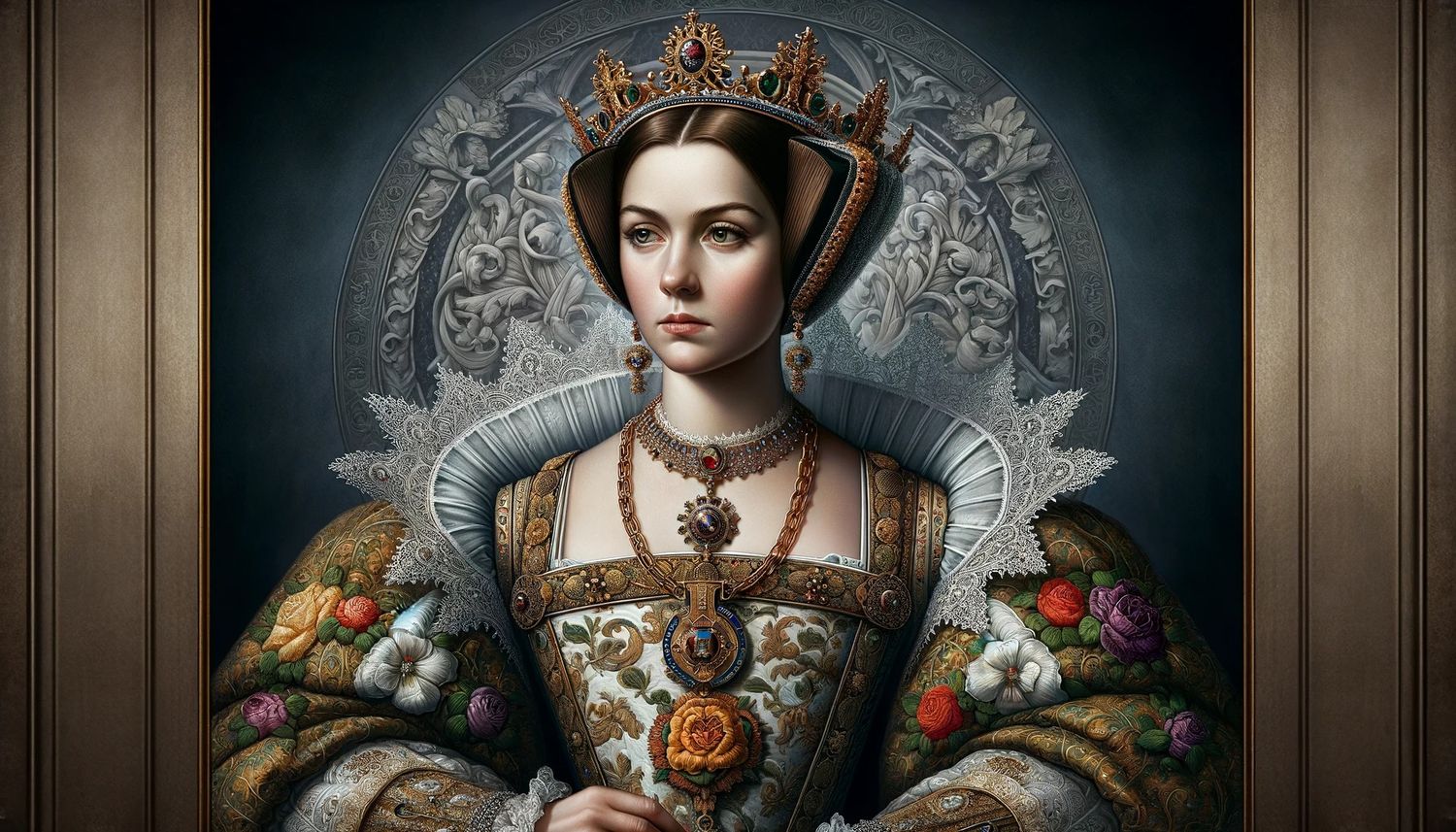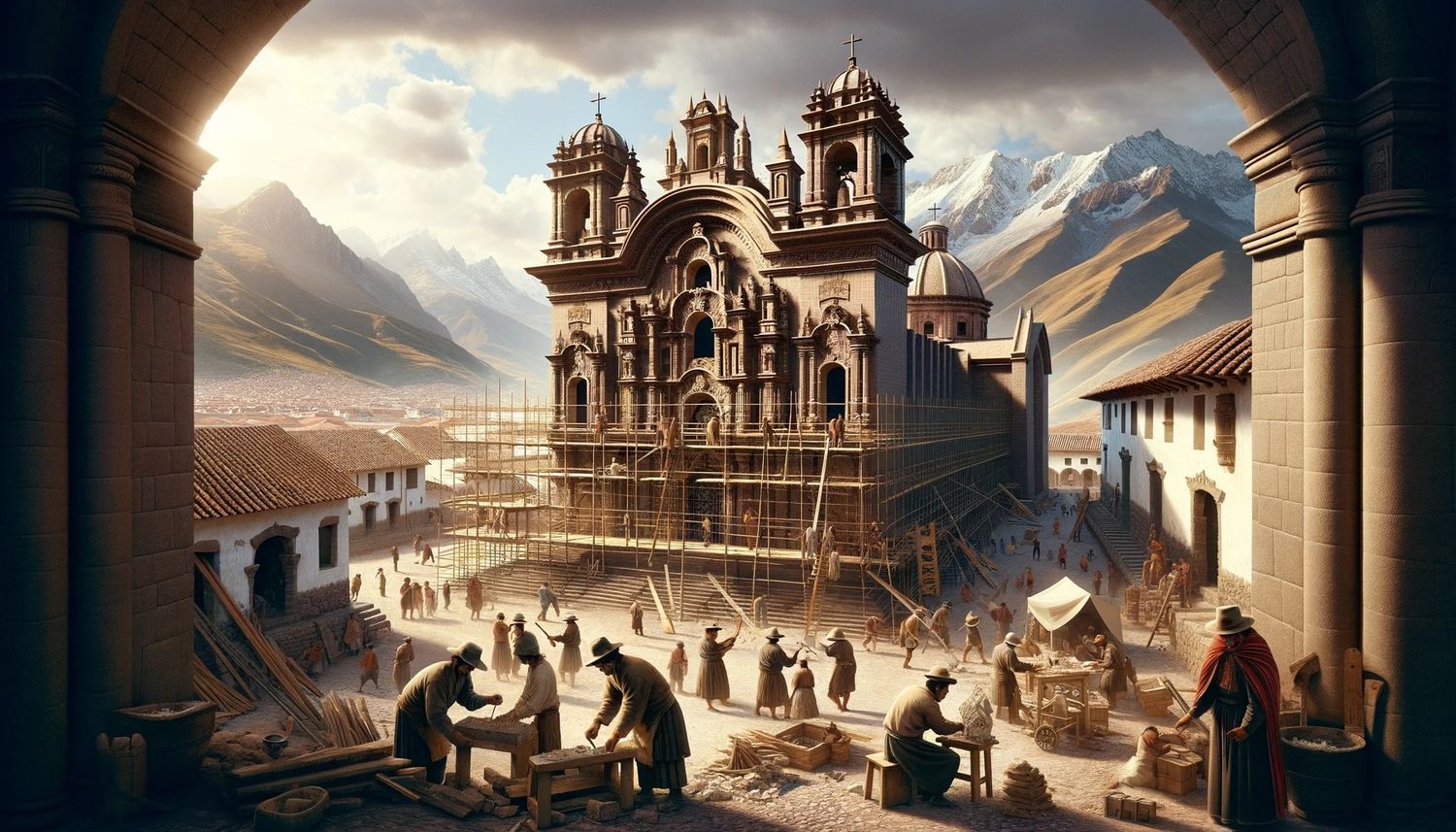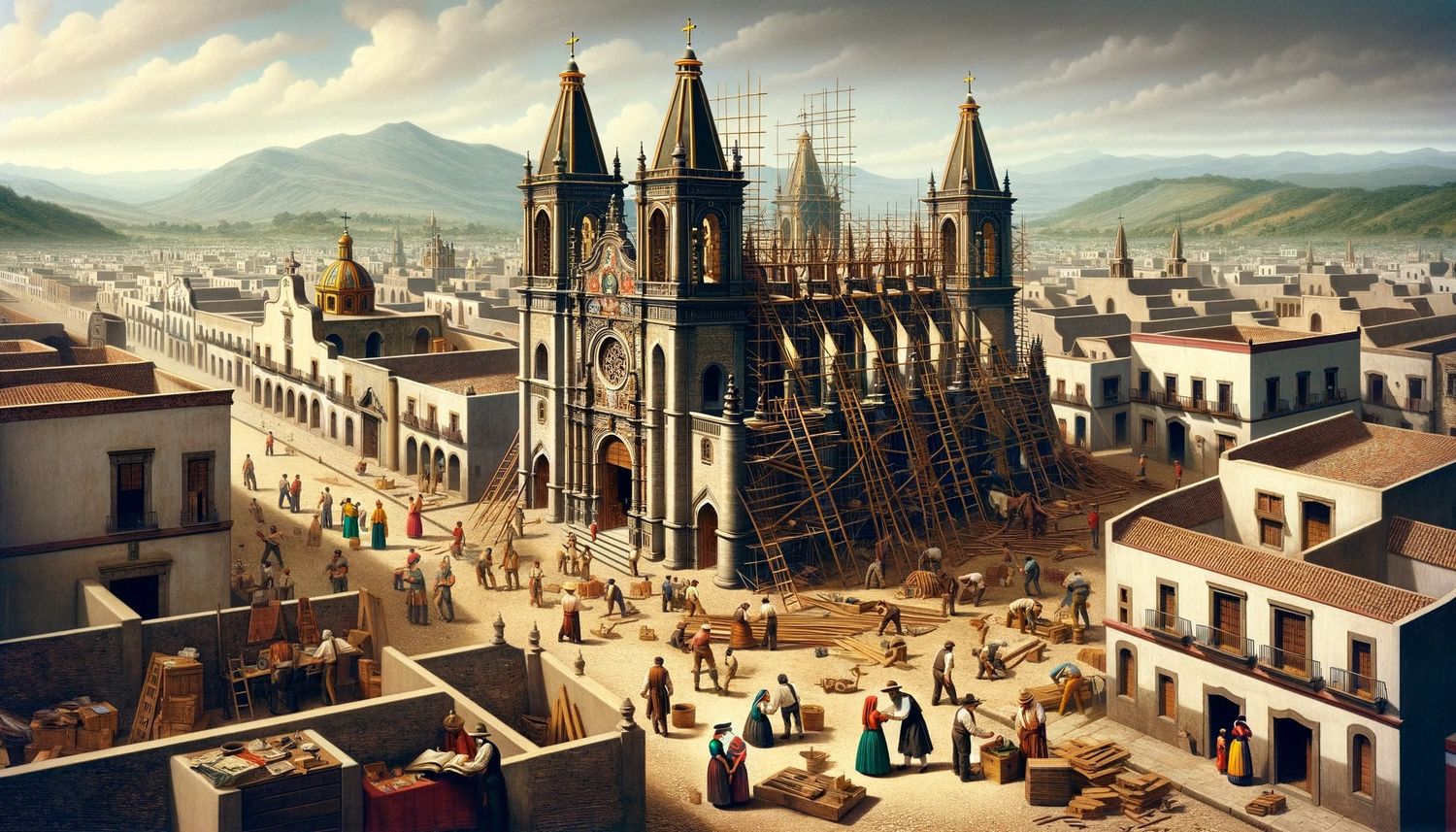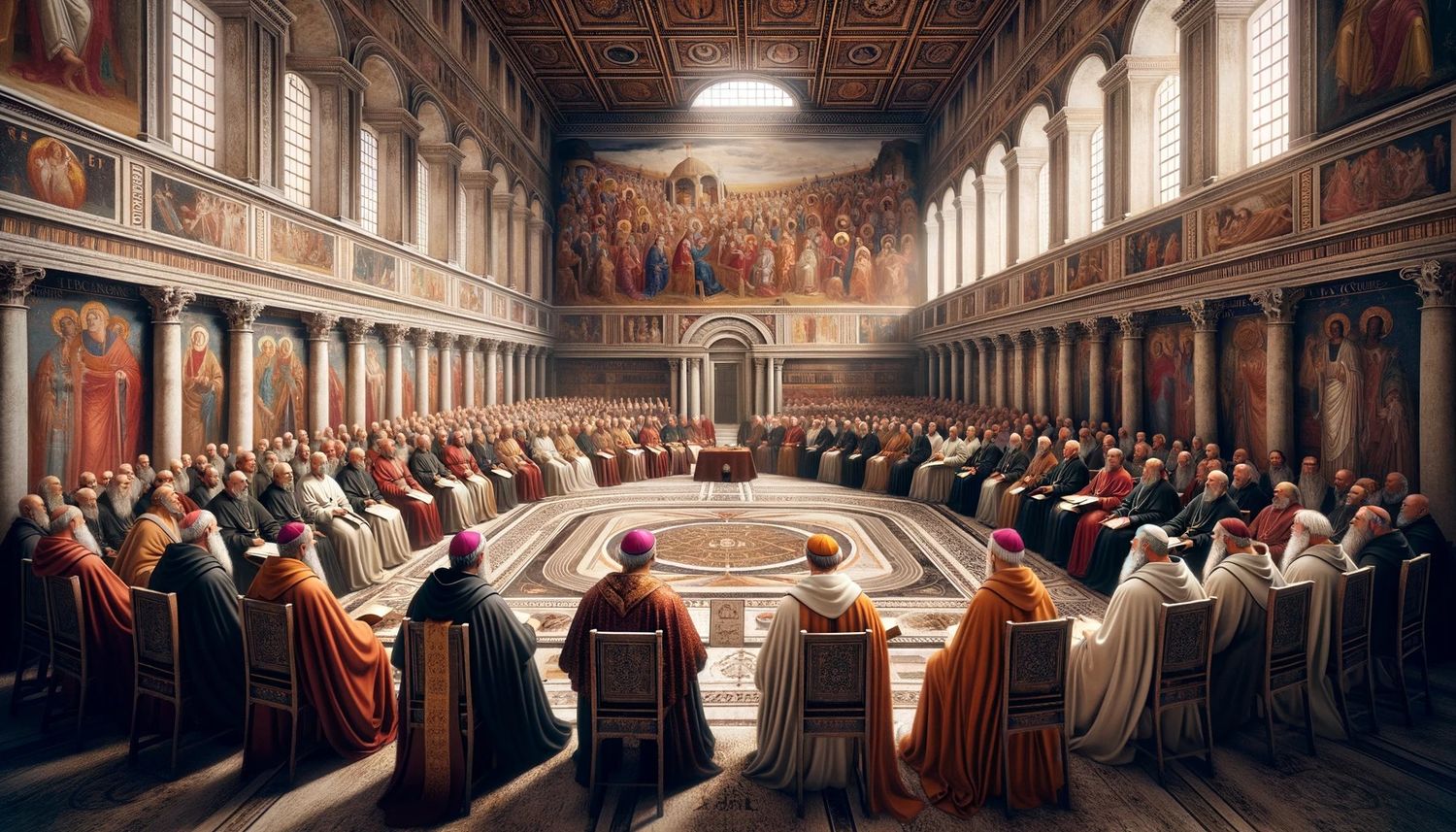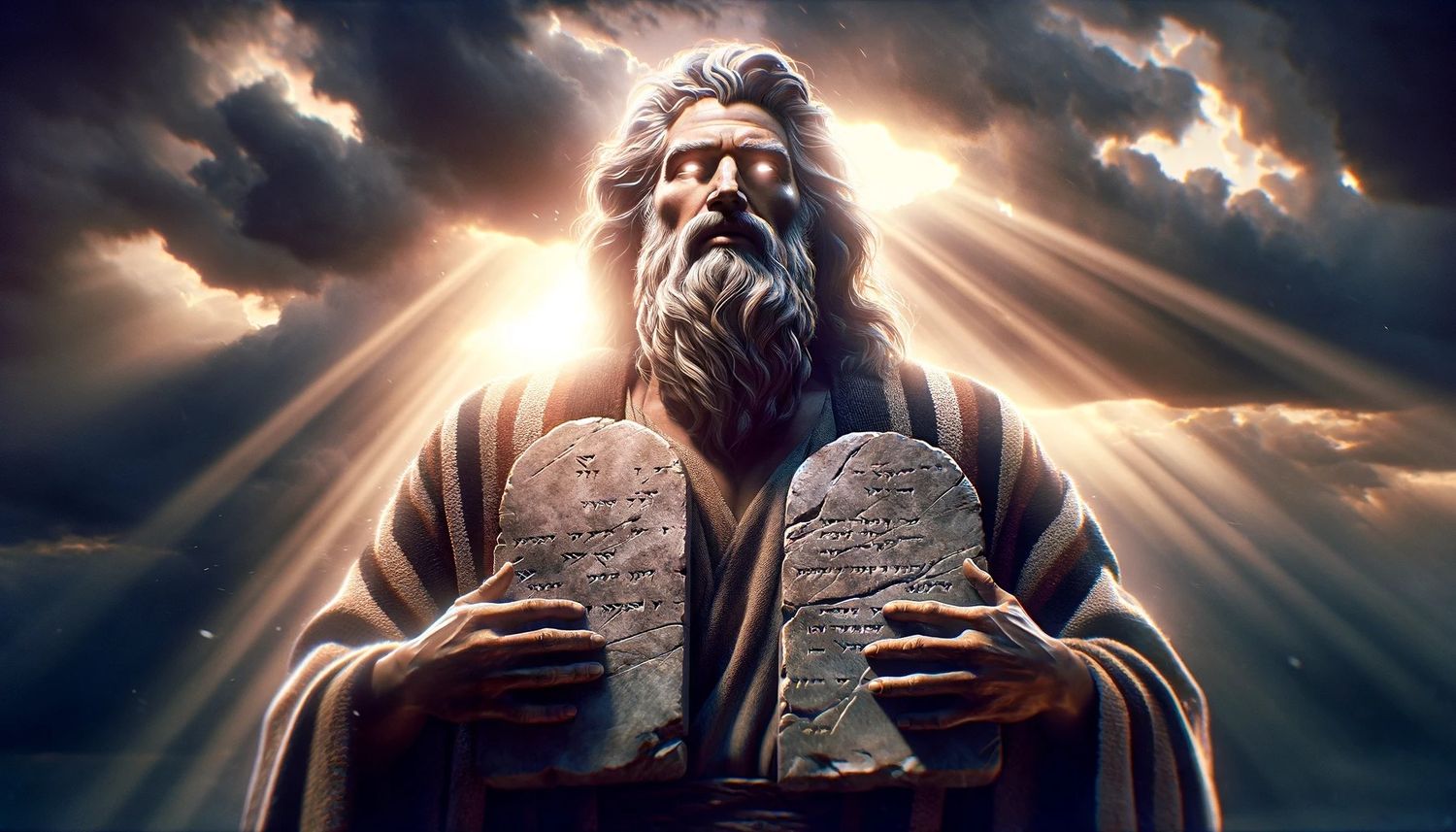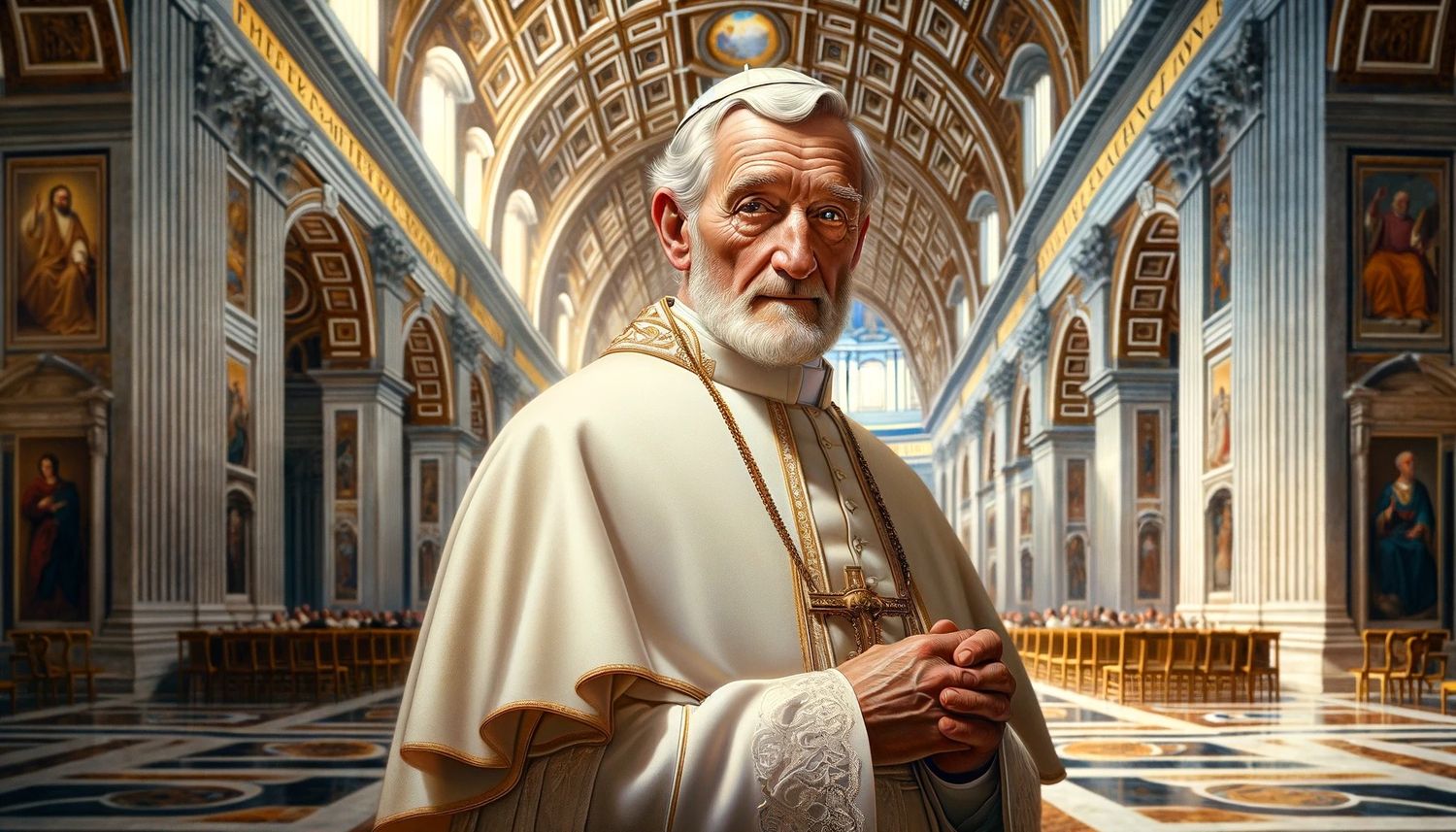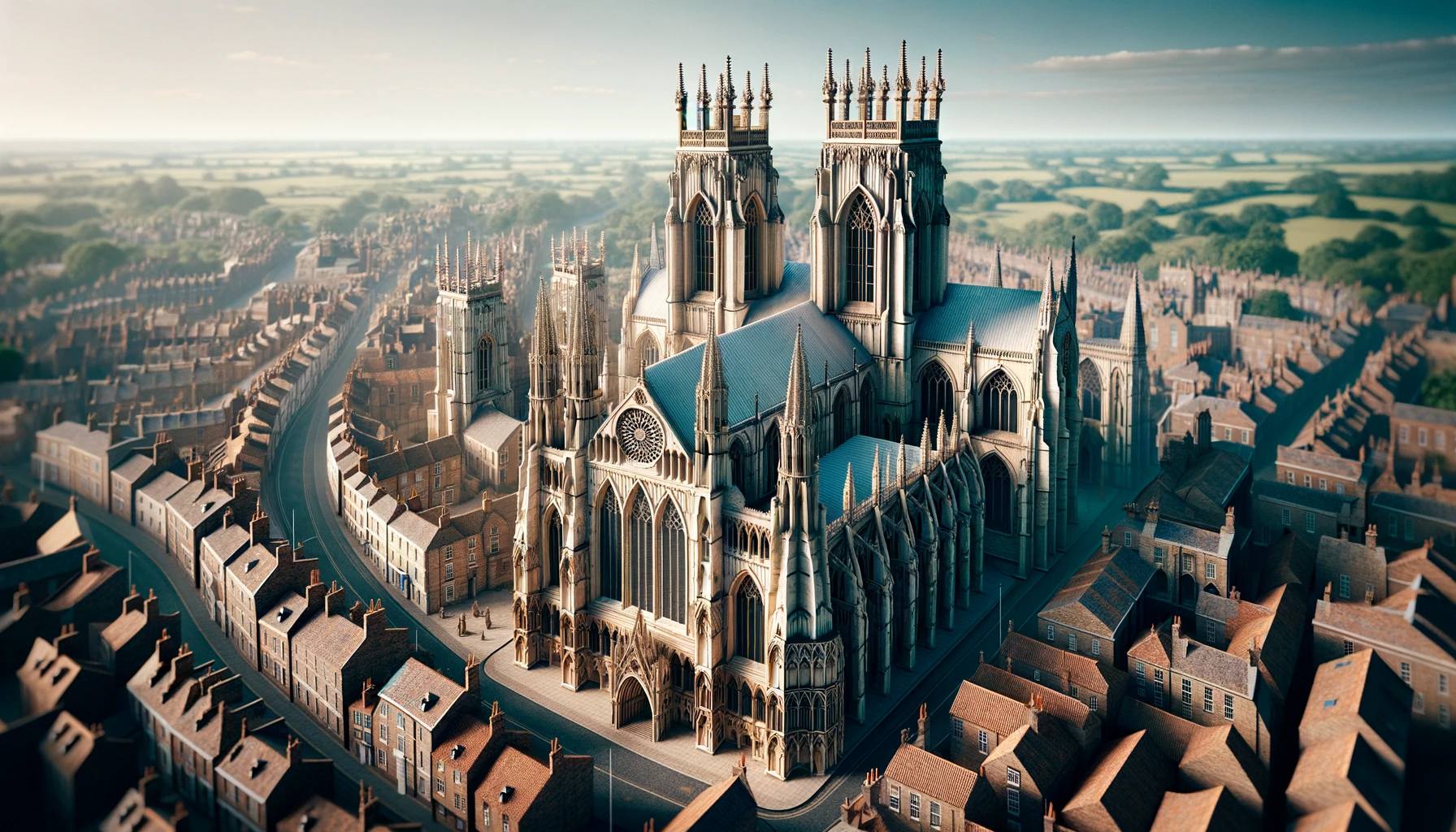Home>Theology and Spirituality>Who Brought Catholicism Back To England
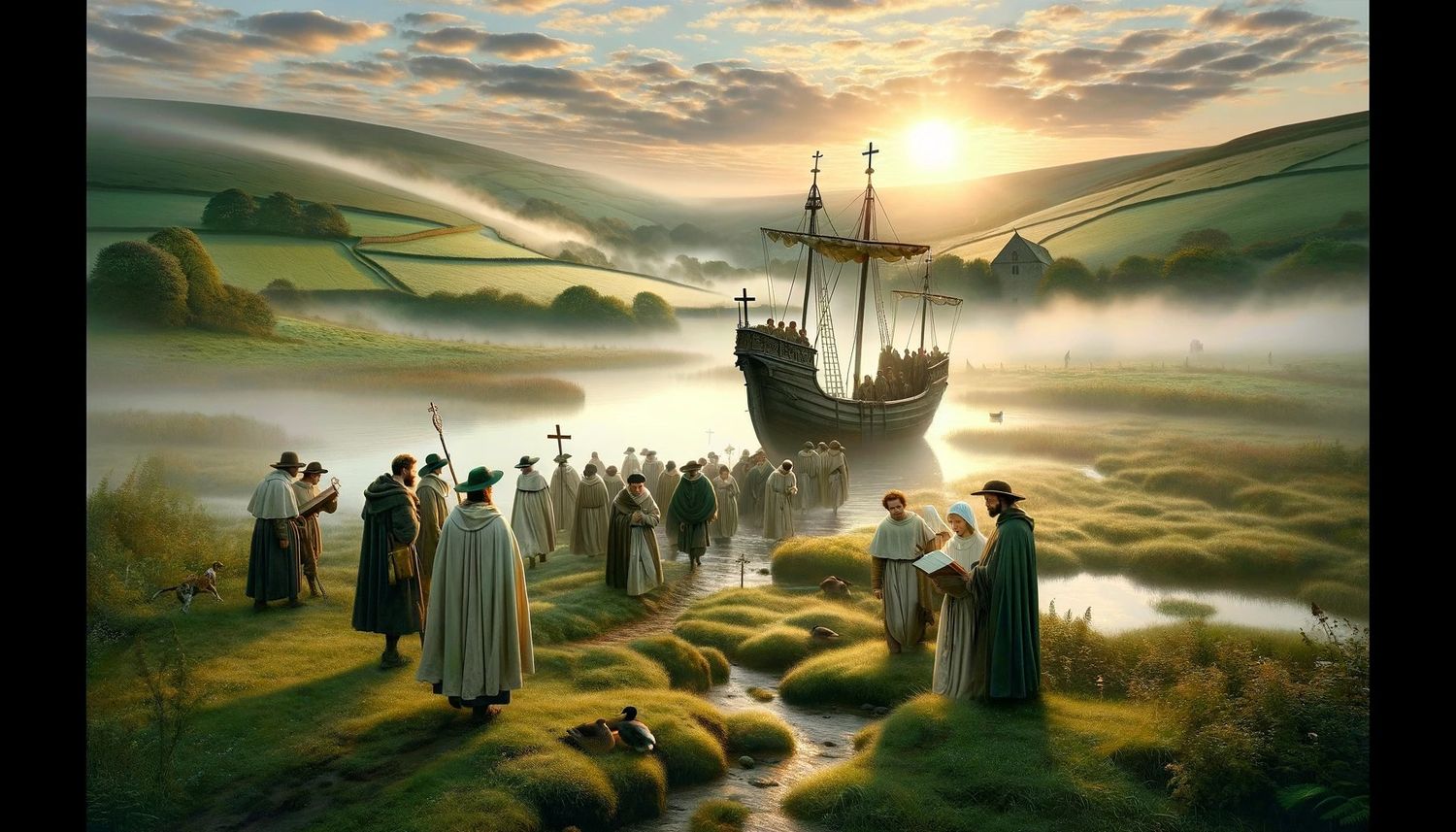

Theology and Spirituality
Who Brought Catholicism Back To England
Published: February 17, 2024
Jason DeRose, Managing Editor at Christian.net, uses his expertise in religion and journalism to deepen understanding of faith's societal impacts. His editorial leadership, coupled with a strong academic background, enriches the platform’s diverse content, earning him recognition in both journalism and religious circles.
Discover the fascinating history of Catholicism's return to England and the pivotal figures who shaped its revival. Explore the intersection of theology and spirituality in this compelling narrative.
(Many of the links in this article redirect to a specific reviewed product. Your purchase of these products through affiliate links helps to generate commission for Christian.net, at no extra cost. Learn more)
Table of Contents
Introduction
The story of Catholicism in England is a rich tapestry woven with threads of faith, power, and resilience. From its early roots to the tumultuous events of the Reformation and the eventual resurgence of the Catholic faith, the history of Catholicism in England is a testament to the enduring influence of religion on society. This article delves into the fascinating journey of Catholicism in England, exploring the pivotal moments, key figures, and the profound impact of its resurgence on the nation.
The tale of Catholicism in England is one of both triumph and tribulation, marked by periods of flourishing devotion and stark oppression. It is a narrative that unfolds against the backdrop of political upheaval, religious fervor, and the unwavering spirit of those who sought to preserve their faith in the face of adversity. As we embark on this exploration, we will journey through the annals of history to uncover the intricate layers of Catholicism's presence in England, from its early establishment to its resurgence in the face of formidable challenges.
Join us as we unravel the captivating saga of Catholicism in England, a story that transcends time and continues to shape the cultural and spiritual landscape of the nation. Through this exploration, we aim to gain a deeper understanding of the profound impact of Catholicism's enduring legacy on the fabric of English society.
Read more: Who Brought Catholicism To Japan
The Early History of Catholicism in England
The roots of Catholicism in England can be traced back to the Roman period when Christianity first arrived on the shores of the island. The early influence of Catholicism in England can be attributed to the missionary efforts of figures such as St. Augustine of Canterbury, who was sent by Pope Gregory the Great in the 6th century to evangelize the Anglo-Saxons. This marked the beginning of a profound religious transformation as pagan beliefs gradually gave way to the spread of Christianity, laying the foundation for the enduring presence of Catholicism in England.
During the medieval era, Catholicism flourished as a dominant force in English society, permeating every aspect of life from governance to culture. The Church wielded significant influence, with cathedrals and monasteries dotting the landscape, serving as centers of spiritual devotion and learning. The intricate fusion of faith and daily life shaped the collective identity of the English people, fostering a deep-rooted connection to Catholic traditions and beliefs.
The crowning of William the Conqueror in 1066 ushered in a new chapter in the history of Catholicism in England, as Norman influence brought about a convergence of cultural and religious practices. The construction of grand cathedrals, including the iconic Canterbury Cathedral, stood as a testament to the enduring legacy of Catholicism, serving as architectural marvels and sacred sanctuaries for the faithful.
The medieval period also witnessed the emergence of revered religious figures such as Thomas Becket, the Archbishop of Canterbury, whose unwavering commitment to upholding the authority of the Church sparked both admiration and conflict with the monarchy. Becket's martyrdom in 1170 elevated him to the status of a revered saint, further solidifying the profound impact of Catholicism on the collective consciousness of the English people.
As the centuries unfolded, Catholicism continued to exert its influence, shaping the moral and ethical framework of English society. The early history of Catholicism in England stands as a testament to the enduring resilience of faith in the face of evolving political landscapes and societal transformations, laying the groundwork for the profound impact that the Catholic faith would continue to have on the nation in the centuries to come.
The Reformation and the Suppression of Catholicism
The 16th century marked a pivotal juncture in the history of Catholicism in England, characterized by the seismic impact of the Reformation and the subsequent suppression of the Catholic faith. The catalyst for this transformative period was the reign of King Henry VIII, whose desire to annul his marriage to Catherine of Aragon led to a dramatic rupture with the Catholic Church.
In 1534, Henry VIII's defiance of papal authority culminated in the Act of Supremacy, establishing the monarch as the supreme head of the Church of England. This decisive break from Rome set in motion a series of sweeping reforms that sought to dismantle the traditional structures of Catholicism and assert the authority of the newly formed Church of England.
The dissolution of the monasteries, a campaign initiated by Henry VIII and later intensified under the reign of his son, Edward VI, resulted in the widespread confiscation of monastic lands and the dispersal of religious communities. This systematic dismantling of monastic institutions dealt a severe blow to the spiritual and communal fabric of Catholicism, upending centuries-old traditions and displacing countless individuals devoted to religious life.
The enforcement of religious uniformity under the reign of Queen Elizabeth I further entrenched the suppression of Catholicism, compelling adherents of the faith to practice in secrecy and endure persecution for their beliefs. Recusancy laws imposed punitive measures on those who refused to attend Church of England services, leading to fines, imprisonment, and even martyrdom for those who remained steadfast in their allegiance to the Catholic faith.
The Reformation era witnessed the valor and resilience of individuals such as St. Thomas More and St. John Fisher, who chose to uphold their Catholic convictions in the face of political pressure, ultimately sacrificing their lives as martyrs for their faith. Their unwavering commitment to Catholicism serves as a poignant reminder of the profound impact of the Reformation's suppression on the lives of devout Catholics, who navigated a perilous landscape fraught with religious persecution and ideological conflict.
The Reformation and the subsequent suppression of Catholicism cast a shadow over the spiritual landscape of England, ushering in an era of profound upheaval and enduring consequences for the practice of the Catholic faith. This tumultuous chapter in the history of Catholicism in England laid the groundwork for a period of clandestine devotion and steadfast resilience, as the faithful sought to preserve their religious heritage amidst the formidable challenges posed by religious persecution and state-sanctioned suppression.
The Return of Catholicism to England
The resurgence of Catholicism in England heralded a transformative period marked by the gradual reemergence of the Catholic faith in the national consciousness. The winds of change began to stir in the 19th century, as a burgeoning movement sought to revitalize the presence of Catholicism in a landscape deeply entrenched in the legacy of the Reformation. This resurgence was fueled by a convergence of factors, including the influence of prominent figures, the restoration of Catholic hierarchy, and a renewed fervor for spiritual revival.
The Oxford Movement, spearheaded by influential theologians and scholars such as John Henry Newman, played a pivotal role in rekindling interest in the Catholic heritage of England. This intellectual and spiritual revival sought to reconnect the Anglican Church with its Catholic roots, advocating for a return to ancient traditions and liturgical practices. The movement's impact reverberated across the ecclesiastical landscape, inspiring a renewed appreciation for the richness of Catholic spirituality and theology.
The restoration of the Catholic hierarchy in England in 1850, under the leadership of Cardinal Nicholas Wiseman, marked a significant milestone in the resurgence of Catholicism. This reinstatement of the hierarchy, which had been absent since the Reformation, symbolized a reassertion of the Catholic Church's institutional presence and authority in England. The establishment of dioceses and the appointment of bishops revitalized the organizational structure of the Catholic Church, laying the groundwork for a renewed sense of unity and purpose among the faithful.
The return of Catholicism to England also witnessed a groundswell of conversions and a burgeoning Catholic community, as individuals from diverse backgrounds embraced the faith. The allure of Catholicism's rich traditions, sacramental life, and spiritual depth captivated the hearts and minds of many, leading to a steady growth in the Catholic population. This influx of new adherents breathed new life into the fabric of the Catholic community, infusing it with a spirit of vitality and diversity.
The revival of Catholicism in England represented a profound reawakening of the nation's spiritual heritage, transcending centuries of religious division and discord. The resurgence of the Catholic faith brought forth a renewed sense of hope, unity, and cultural enrichment, as the timeless traditions of Catholicism found a renewed home in the hearts of the English faithful. This resurgence continues to resonate in the vibrant tapestry of England's religious landscape, serving as a testament to the enduring resilience and enduring legacy of Catholicism in the nation's collective consciousness.
Key Figures in the Reintroduction of Catholicism
The reintroduction of Catholicism to England was propelled by the visionary leadership and unwavering dedication of key figures who played instrumental roles in revitalizing the Catholic faith within the nation. These individuals, through their profound influence, intellectual prowess, and spiritual fortitude, left an indelible mark on the resurgence of Catholicism, shaping its trajectory and impact on the collective consciousness of the English people.
-
John Henry Newman: A towering figure in the Oxford Movement, John Henry Newman emerged as a luminary whose intellectual acumen and impassioned advocacy for Catholic principles ignited a fervent revival of the Catholic heritage within the Anglican Church. His seminal works, including "Apologia Pro Vita Sua," resonated deeply with seekers of spiritual truth, inspiring a renaissance of Catholic thought and theological inquiry. Newman's eventual conversion to Catholicism and his pivotal role in championing the Oxford Movement positioned him as a central figure in the reintroduction of Catholicism to England, leaving an enduring legacy as a cardinal and influential theologian.
-
Cardinal Nicholas Wiseman: As the first Archbishop of Westminster and a cardinal of the Catholic Church, Nicholas Wiseman wielded profound influence in reestablishing the Catholic hierarchy in England. His visionary leadership and unwavering commitment to nurturing the Catholic community laid the groundwork for a renewed sense of institutional presence and spiritual vitality. Wiseman's efforts in reinstating the diocesan structure and appointing bishops revitalized the organizational framework of the Catholic Church, fostering a renewed sense of unity and purpose among the faithful.
-
Blessed Dominic Barberi: A passionate and compassionate missionary, Blessed Dominic Barberi played a pivotal role in the conversion of prominent individuals to Catholicism, including the renowned poet and writer, John Henry Newman. His gentle yet resolute approach to evangelization endeared him to many, as he tirelessly worked to share the richness of the Catholic faith with a diverse array of individuals. Blessed Dominic Barberi's profound impact on the spiritual landscape of England exemplified the transformative power of personal witness and pastoral care in reintroducing Catholicism to the nation.
These key figures, among others, served as beacons of inspiration and catalysts for change, breathing new life into the fabric of Catholicism in England. Their unwavering dedication, intellectual rigor, and spiritual fervor paved the way for a profound reawakening of the Catholic faith, leaving an indelible imprint on the nation's religious landscape. The enduring influence of these figures continues to resonate in the vibrant tapestry of England's spiritual heritage, embodying the timeless resilience and enduring legacy of Catholicism within the nation's collective consciousness.
Read more: Who Brought Catholicism To Poland
The Impact of Catholicism's Return on England
The resurgence of Catholicism in England heralded a transformative period marked by the gradual reemergence of the Catholic faith in the national consciousness. The impact of this resurgence reverberated across the societal, cultural, and spiritual dimensions of England, leaving an indelible imprint on the fabric of the nation.
Spiritually, the return of Catholicism infused a renewed sense of vitality and diversity into the religious landscape of England. The timeless traditions, sacramental life, and spiritual depth of Catholicism captivated the hearts and minds of many, drawing individuals from diverse backgrounds to embrace the faith. This influx of new adherents breathed new life into the fabric of the Catholic community, fostering a sense of unity and cultural enrichment. The resurgence of the Catholic faith provided a spiritual anchor for many, offering solace, guidance, and a profound connection to a rich heritage of faith and tradition.
Culturally, the return of Catholicism reinvigorated the artistic, intellectual, and educational spheres of England. The influence of Catholic thought and theology permeated the realms of literature, art, and academia, inspiring a renaissance of creative expression and scholarly inquiry. The enduring legacy of Catholicism's artistic and cultural contributions enriched the tapestry of English heritage, fostering a deeper appreciation for the profound impact of the Catholic faith on the nation's cultural identity.
Societally, the resurgence of Catholicism engendered a spirit of compassion, social engagement, and ethical stewardship within the community. The Catholic ethos of social justice, charitable outreach, and moral responsibility resonated deeply, inspiring individuals to actively contribute to the betterment of society. The Catholic community's commitment to serving the marginalized, advocating for human dignity, and fostering a spirit of solidarity contributed to the broader societal fabric, leaving an enduring imprint on the collective consciousness of England.
In essence, the return of Catholicism to England transcended religious boundaries, permeating the spiritual, cultural, and societal dimensions of the nation. Its impact resonated in the hearts and minds of the English people, fostering a renewed sense of hope, unity, and cultural enrichment. The enduring legacy of Catholicism continues to shape the fabric of English society, serving as a testament to the timeless resilience and profound impact of the Catholic faith within the nation's collective consciousness.
Conclusion
The journey of Catholicism in England is a testament to the enduring resilience of faith amidst the ebb and flow of history. From its early establishment to the tumultuous events of the Reformation and the eventual resurgence of the Catholic faith, the narrative of Catholicism in England reflects the profound interplay of spirituality, culture, and societal transformation. The early roots of Catholicism, intertwined with the missionary zeal of figures such as St. Augustine of Canterbury, laid the foundation for a rich tapestry of faith that permeated the fabric of English society.
The Reformation era, marked by the seismic shift in religious dynamics and the suppression of Catholicism, cast a shadow over the spiritual landscape of England, ushering in a period of clandestine devotion and enduring consequences for the practice of the Catholic faith. The valor and resilience of individuals such as St. Thomas More and St. John Fisher serve as poignant reminders of the profound impact of religious persecution and ideological conflict on the lives of devout Catholics.
The resurgence of Catholicism in England, fueled by the visionary leadership of key figures and a renewed fervor for spiritual revival, heralded a transformative period that rekindled the presence of the Catholic faith in the national consciousness. The restoration of the Catholic hierarchy, the intellectual and spiritual revival of the Oxford Movement, and the influx of new adherents breathed new life into the fabric of the Catholic community, infusing it with a spirit of vitality and diversity.
The impact of Catholicism's return reverberated across the spiritual, cultural, and societal dimensions of England, fostering a renewed sense of hope, unity, and cultural enrichment. The enduring legacy of Catholicism continues to shape the fabric of English society, transcending religious boundaries and leaving an indelible imprint on the collective consciousness of the nation.
As we reflect on the captivating saga of Catholicism in England, we are reminded of the timeless resilience and enduring legacy of the Catholic faith. Its profound impact on the spiritual, cultural, and societal dimensions of the nation serves as a testament to the enduring influence of faith and the remarkable capacity for spiritual revival amidst the ever-evolving tapestry of history. The story of Catholicism in England is a testament to the enduring resilience of faith amidst the ebb and flow of history, leaving an indelible imprint on the collective consciousness of the nation.

